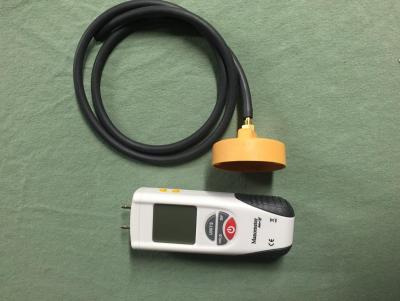John, this is interesting. Why will AOS leak make MAF read higher?
Even I have a setup like that at home :)
You have hit on the $64 dollar question. We know from direct experience that MAF's on their way to "aging out" often read higher than expected air volume flows; we have seen this on Porsche's as well as other brands, so it is not an unexpected event. So when we saw higher than normal MAF air volume numbers on cars with obviously dying AOS units, we kind of wrote it off to an aging sensor. But then someone brought it to my attention that they had seen similar high air flow volumes on cars with bad AOS units, that subsequently (but not always) dropped back into range when the AOS was replaced, so it was not always a dying sensor.
Always intrigued by a new mystery on these cars, and not wanting to needlessly be replacing expensive MAF units, we started looking at cars we got in that failed the AOS vacuum test (vacuum signal at the oil fill caps greater than 5 inches of water). And what we saw mimicked what the other observer noted, the air flow volume often changed, which set us scratching out heads. On the 986 in question for example, the AOS line to the intake system enters behind the throttle body and ahead of the intake plenum, and the MAF is located a couple of feet "upstream" of the throttle body, near the air filter box on the driver's side rear fender; so intuitively it would seem rather too remote to see a change in the vacuum signal level where the AOS line enters the intake. But it apparently does under some conditions. Why this happens remains an item of speculation, and the amount of air volume change is not always large, but always seems to be in the same direction when it happens.
An interesting experiment would be to set up a car to mimic a failing AOS (which would require being able to "throttle" the AOS crankcase vacuum level up or down, while monitoring both the intake plenum vacuum levels and the MAF air flow volumes) and collect some additional data points in an attempt to see what is going on. Unfortunately, in the shop we are nearly always in a time crunch to figure out what is wrong and get the car back into the owner's hands, so we have not attempted this. It would be an interesting R&D experiment however.
Thanks John for the detailed reply. My thinking is as follows:
Suppose everything is working correctly on a warmed up idling engine. Now all in a sudden the AOS diaphragm cracks. That allows MORE crankcase gas (oxygen deprived and even fuel-enriched) into the throttle and LESS fresh air from intake, Both effect will create an instantaneous rich condition. Engine will start to stumble due to wrong a/f mixture. To maintain a minimum rpm, the DME compensates by opening up the throttle a bit more to let more fresh air (oxygen) into the engine to achieve the correct a/f ratio. At the end the MAF will see more flow (in mass per second) and the rpm may be raised a little too (not sure about this though).
When you observed the MAF read a bit higher than normal, I assume the rpm was at a normal value and not raised? I mean if the rpm was also raised, it's just natural the MAF read higher.
I think it will be quite difficult to simulate the crack inside the AOS precisely. One will need to build an adjustable bypass valve between the AOS vent tube that's connected to the crankcase and the AOS vent tube that's connected to the throttle body. Will be an interesting experiment nonetheless :)
I would expect that if the your scenario were correct, the idle should go up and down, and with the repeated A/F issues, the car would also code because the mixture would eventually have to swing out of range one way or the other more than once.
We observed the higher MAF volume numbers at a normal (and steady) idle speeds.
The basic problem with the AOS design is that it is way too complicated, too fragile, and has too many ways of going south on you. We thought about how you would have to modify one to test our observations and it quickly turned into a plumbing and electrical nightmare. Sometimes the view just ain't worth the climb.............




